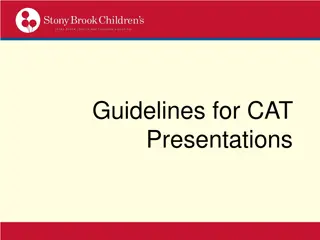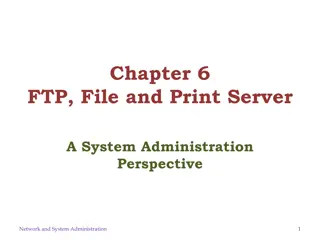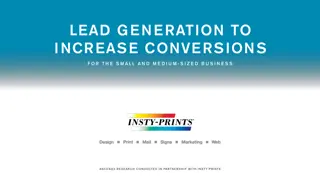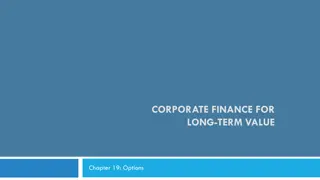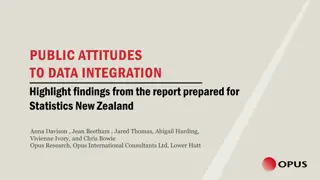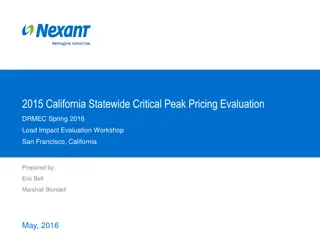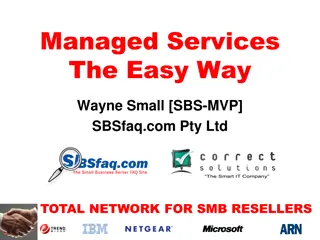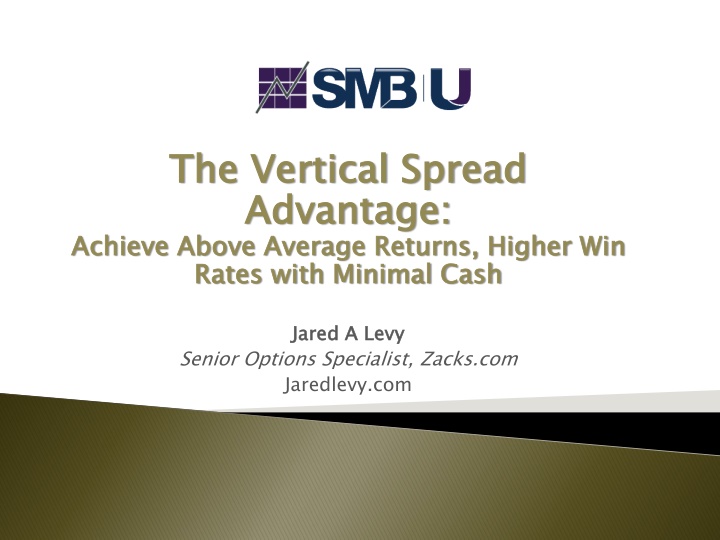
Achieve Above Average Returns with Vertical Spread Advantage
Learn about achieving above-average returns and higher win rates with minimal cash through the vertical spread advantage discussed by Jared A. Levy, a senior options specialist. Explore educational opportunities provided by SMB Training, T3 Trading Group, and more. Understand the risks involved in securities, options, futures, and forex trading. Disclaimer: Simulated performance results are for educational purposes only and do not guarantee actual trading outcomes.
Download Presentation

Please find below an Image/Link to download the presentation.
The content on the website is provided AS IS for your information and personal use only. It may not be sold, licensed, or shared on other websites without obtaining consent from the author. If you encounter any issues during the download, it is possible that the publisher has removed the file from their server.
You are allowed to download the files provided on this website for personal or commercial use, subject to the condition that they are used lawfully. All files are the property of their respective owners.
The content on the website is provided AS IS for your information and personal use only. It may not be sold, licensed, or shared on other websites without obtaining consent from the author.
E N D
Presentation Transcript
The Vertical Spread Advantage: Achieve Above Average Returns, Higher Win Rates with Minimal Cash The Vertical Spread Advantage: Achieve Above Average Returns, Higher Win Rates with Minimal Cash Jared A Levy Jared A Levy Senior Options Specialist, Zacks.com Jaredlevy.com
1. SMB TRAINING is NOT a Broker Dealer TRAINING offers a number of products and services, both electronically Smbtraining.com) and in person. Through Smbtraining.com, Floor , a community through which independent traders, observe a virtual trading floor environment (as described below) for educational purposes. SMB TRAINING also offers web-based, interactive training courses on demand. 2. The seminars given by SMB TRAINING are for educational purposes only nor should be construed, as an offer, or a solicitation of an offer, to buy or responsible for any investment decisions you make, and such decisions will be based solely on your evaluation of your financial circumstances, investment objectives, risk 3. This material is being provided to you for educational purposes only recommendation by SMB TRAINING or its affiliates to buy, sell or hold any security, financial product or instrument discussed therein or to engage in any specific investment strategy. The content neither is, nor should be construed as, an offer, or a solicitation of an offer, to buy, sell, or hold any securities. You are fully responsible for any investment decisions you make. Such decisions should be based solely on your evaluation of your financial circumstances, investment objectives, risk tolerance and liquidity needs. 4. SMB Training and SMB Capital Management, LLC are separate but affiliated companies. 5. T3 Trading Group, LLC is a Registered SEC Broker-Dealer and Member of the CBOE Stock Exchange (CBSX www.CBOE.com). All trading conducted by contributors on Virtual Trading Floor is done through T3 Trading Group, LLC. 7. The risk of loss in trading securities, options, futures and forex can be substantial. Customers must consider all relevant risk factors, including their own personal financial situation, before trading. Options involve risk and are not suitable for all investors. See the Options Disclosure Document: Characteristics and Risks of Standardized Options. Trading foreign exchange on margin carries a high level of risk, as well as its own unique risk factors. Please read the following risk disclosure before considering the trading of this product: Forex Risk Disclosure. Futures and forex accounts are not protected by the Securities Investor Protection Corporation (SIPC). 6. No Relevant Positions SMB TRAINING is NOT a Broker Dealer. SMB TRAINING engages in trader education and training. SMB (over the internet through SMB TRAINING offers the Virtual Trading traders (subscribers), as well as T3 Trading Group, LLC educational purposes only. This information neither is, sell securities. You shall be fully tolerance, and liquidity needs. educational purposes only. No information presented constitutes a
Please note: Hypothetical computer simulated performance results are believed to be accurately presented. However, they are not guaranteed as to accuracy or completeness and are subject to change without any notice. Hypothetical or simulated performance results have certain inherent limitations. Unlike an actual performance record, simulated results do not represent actual trading. Since, also, the trades have not actually been executed; the results may have been under or over compensated for the impact, if any, of certain market factors such as liquidity, slippage and commissions. Simulated trading programs in general are also subject to the fact that they are designed with the benefit of hindsight. No representation is being made that any portfolio will, or is likely to achieve profits or losses similar to those shown. All investments and trades carry risks.
Jaredlevy.com 18 years experience Member of 3 major exchanges Traded tens of thousands of option contracts daily Senior equities strategist for Zacks.com o Whisper Trader, TAZR Formerly with PEAK6 & ONN.tv Managing Partner of Belpointe Alternatives Featured on CNBC (Fast Money), Fox, Fox Business, Bloomberg TV, CNN Radio Author of Your Options Handbook & The Bloomberg Visual Guide to Options 1997 PHLX 2012 FOX Propecia does work!
Trading appears deceptively easy. When a beginner wins, he feels brilliant and invincible. Then he takes wild risks and loses everything. Dr. Alexander Elder Trading for a Living Know your strategy Control your Risk Keep your Discipline! Paper Trade
You will receive a ton of information You will have a large checklist (it goes quicker than you think) Don t get analysis paralysis Don t get analysis paralysis Go with your gut, as long as it s supported by logical, objective data
Are legitimate financial products Are not mysterious or magic Perform as advertised Require work to be properly understood
Derivatives derive their value from properties of the underlying Underlyings - equities, bonds, indices, FX, commodities Basic principles are the same regardless of the underlying
Floor trading slowly fading away Retail trader has ready access to analytics Black box trading systems o Formulas and algorithms fully automate and execute trades Grey box trading systems Combine Black Box algorithms with human interaction
Computers & Models creating more efficient and faster moving markets No real advantage to being on the floor in some markets o Many professional tools are available to average investors o Spreads in some products are very small
Homework Experience (pitfalls and advantages) Statistics Technicals Strategy Selection Money Management Exit Strategies (profit and loss) USE A DAMN CHECKLIST!!
Economic Environment o Where are We in the Economic Cycle? Earnings Trends /Corporate Fundamentals Technical patterns News /Blog Flow What are the Talking Heads Saying? What are your peers saying?
Strong Economy: (higher risk strategies) o Higher interest rates accompanied by lower bond prices o Rising commodity prices o Rising Inflation o Stock market is harder to navigate Slower Growth Economy: (moderate risk strategies) o Stable or lower interest rates and solid bond prices o Lower commodity prices o Lower inflation o Bottoming to rising stock prices Weak Economy: (defensive, high probability, lower risk strategies) o Low interest rates and strong bond market o Lower commodity prices o Low inflation o Much higher stock prices
Relationships between the indicators help predict the future financial (and market) cycles. They fall into three categories: 1.) Leading 2.) Coincident 3.) Lagging
Leading Leading: : Stock prices, slope of the yield curve, and the strength or weakness of the US Dollar.
Stock prices Specifically look at the S&P 500. It represents the 500 largest companies on the NYSE. Stock prices: : The stock market closely relates to the growth in liquidity. Increasing growth reflects increasing liquidity, which directly benefits stock prices. For example, the Fed lending more money to distressed financial firms.
Slope of the yield curve Slope of the yield curve: Confirms trends in the growth of money supply and the dollar. Computed by subtracting the 13-week Treasury bills (^IRX) from the yield on the 10-year Treasury bond. (See the Federal Reserve website for weekly numbers: http://www.federalreserve.gov/releases/h15/Current/) If the difference increases = yield steepens Decrease = flattens Inversion = negative difference between the two.
When it steepens, the Fed is loosening credit and real short-term interest rates (difference between short-term interest rates and the inflation rate) decline. When it flattens, the Fed is tightening credit and trying to catch an overheating economy while keeping inflation under control. When it inverts, the yield on the 13-week Treasury Bill is the same or higher than the yield on the 10- year Treasury bond. This is typical in times of tight credit control and indicates a future recession.
Look at bond yield spreads! They measure credit risk in the markets. The spread is a measure between the BAA bond yields (lower grade bonds) and the 10-year Treasury bond yields. When spreads rise spreads rise to a very high level, it signals deteriorating credit conditions. High credit spreads make it harder for corporations to borrow and invest. As spreads widen, the economy tends to slow. For investors, however, high spreads represent additional potential returns for a given unit of risk-taking. Peak levels of risk typically precede strong returns on risky assets - even if the strong returns are short-lived, as was the case in 2003.
Employment numbers, production, housing activity, retail sales, car sales, Purchasing Manager Index, ISM reports, Sentiment. These are most often reported and sometimes distorted by the media.
To indicate if economic growth is rising or falling. Indicate whether growth is above or below the average. Indicate when growth reaches a peak or trough. Use as checkpoints while you re in a longer duration trade The coincident indicators often follow 6-18 months after a decline in leading indicators.
Institute for Supply Management, Purchasing Managers The number reported reflects trends in the manufacturing and non-manufacturing sectors. The index oscillates around 50%. Business activity is strong when the reading is above 50.
Bureau of Labor Statistics Reported on the First Friday of every month. It gives investors a report of employment figures for the previous month. ADP precedes that Wednesday and has historically been more positive
When car sales and goods are robust, the economy is growing. When they are flat the economy is running out of energy. Look for trends greater than 3 months
When housing starts are increasing, the economy is strong. The home is not only the larges personal asset, but inflation protection Home prices falling has far reaching ramifications
Real short-term interest rates, inflation at the consumer and producer levels, and the growth in commodities. When these start to move, major change has already happened
Measures the difference between short-term interest rates and the inflation rate. High real short-term interest rates are associated with periods of declining inflation rates, higher bond prices, and lower precious metal stocks. Low real interest rates create a volatile stock market.
Inflation (deflation) at the consumer level Look at trends Often misleading and hard to read Break the reports apart to find where prices really are moving
The economy is expanding at an above average rate. Employees demand a rise in income. Consumers borrow more money. More borrowed money raises interest rates. Moderately higher interest rates cause the consumer to re-think buying more. Producers then cut back on their production, and the economy slows to a more manageable growth rate.
Do you account for macro risk? Are you able to quantify it?
Some are more easily identified than others. For example, if short-term interest rates drop, commodities drop, then the money supply may grow for a few months before stock prices grow. Another scenario is a weak economy with stable or lower rates with firm bond prices. Commodities are heading lower, and inflationary fears start to subside.
These are the typical turning points in the business and financial cycles. The leading, coincident and lagging indicators all play off each other in different ways. Each scenario forecasts the next; this helps you get an idea of what s to come and adjust your risk accordingly
The leading indicators have risen sharply but are growing more slowly. The coincident indicators rise sharply, and the lagging indicators spike. Stock prices are in a bull market. The Dollar is strong but trading in a range. The yield curve has been steepening for a while and is flattening out. Industrial production is expanding with the ISM well above 50%. Employment and retail are rising. Inflation is creeping up along with the strong economy, forcing commodities to strengthen.
The leading indicators decline, the coincident indicators rise rapidly then slow, and the lagging indicators rise. Consumers are borrowing less and trim their purchases. Rising inflation reflects rising costs for business. Bond yields are moving higher because of rising inflation. The Dollar is weakening dramatically.
The leading indicators continue to decline, the coincident indicators are still heading lower, and the lagging indicators have stopped rising. The economy has weakened enough due to slower growth in demand. Interest rates are low. Commodities are lower due to less demand on the consumer and manufacturer levels. The yield curve flattens. The Dollar remains weak.
The leading indicators bottomed, the coincident indicators decline and the lagging indicators decline. Costs are declining and margins are improving. More money is borrowed. Due to remaining low interest rates, the yield curve steepens. Stock prices gain renewed strength. Foreign investors recognize new prospects and bid up the dollar. (Bond auction results?)
The leading indicators continue to rise, the coincident indicators stop dropping and rise slowly and the lagging indicators are still in a downtrend. Commodity prices are still moving lower. Lower interest rates and inflation prompt consumers to borrow and purchase goods. The economy stops slowing. Rinse & Repeat Rinse & Repeat
Depends on the level of risk. When risk rises, the chances of making a profitable return drops. IS RISK HIGH OR LOW? What is your trade horizon? This is the critical planning stage. Poor planning can hurt.
Step 2 : Finding Your Target Step 2 : Finding Your Target
Scanning o Finviz.com o Zacks.com Scanning Ranking System o Zacks.com o CANSLIM o Trademonster.com Ranking System Fundamental Triggers o Finviz.com o Yahoo finance Fundamental Triggers News Triggers o Marketwatch.com o Wsj.com News Triggers
Corporate Triggers o Earnings.com o Sec.gov Corporate Triggers Technical Triggers o Tc2000.com o Finviz.com Technical Triggers Volatility Triggers o Optionshouse.com o Trademonster.com o Livevol.com Volatility Triggers




